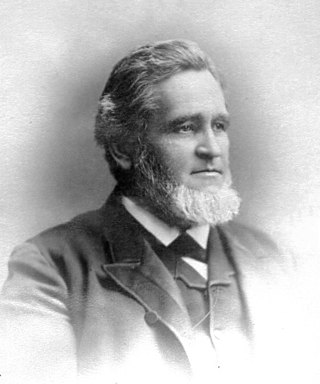
Alexander Lyman Holley was an American mechanical engineer, inventor, and founding member of the American Society of Mechanical Engineers (ASME). He was considered the foremost steel and plant engineer and designer of his time, especially in regard to applying research to modern steel manufacturing processes.

John Edson Sweet was an American mechanical engineer, inventor, professor, businessman and president of the American Society of Mechanical Engineers from 1884–1885. He is known for building the first micrometer caliper in 1873, for making tools, and for inventing the "straight line" engine.
Joseph Henry Keenan was an American thermodynamicist and mechanical engineer noted for his work in the calculation of steam tables, research in jet-rocket propulsion, and his work in furthering the development in the understanding of the laws of thermodynamics in the mid 20th century.

Erasmus Darwin Leavitt Jr., also known as E. D. Leavitt, was a noted American mechanical engineer best known for his steam engine designs.

Matthew Henry Phineas Riall Sankey was an Irish engineer and captain in the Royal Engineers, known as the creator of the Sankey diagram.

Albert Kingsbury was an American engineer, inventor and entrepreneur. He was responsible for over fifty patents obtained between the years 1902 to 1930. Kingsbury is most famous for his hydrodynamic thrust bearing which uses a thin film of oil to support weights of up to 220 tons. This bearing extended the service life of many types of machinery during the early 20th century. It was primarily outfitted on Navy ships during World War I and World War II.

John Henry Lienhard IV is Professor Emeritus of mechanical engineering and history at The University of Houston. He worked in heat transfer and thermodynamics for many years prior to creating the radio program The Engines of Our Ingenuity. Lienhard is a member of the US National Academy of Engineering.

De Volson Wood was an American civil engineer and educator. He invented a steam rock drill and an air compressor and designed an ore dock. Wood was a professor, an author of multiple monographs on mathematics and engineering, vice-president of the American Association for the Advancement of Science and the first president of the American Society for Engineering Education.

Duncan Dowson was a British engineer who was Professor of Engineering Fluid Mechanics and Tribology at the University of Leeds.

Horace See was an American mechanical engineer, marine engineer, naval architect, inventor, and superintendent. He is known as principal naval architect at the William Cramp & Sons shipyard in Philadelphia, and as president of the American Society of Mechanical Engineers in the year 1888–89.

Jesse Merrick Smith was a prominent American mechanical engineer, consulting engineer, patent expert, and president of the American Society of Mechanical Engineers in the year 1909-10.

Edward Daniel Meier was an American mechanical engineer, and President and chief engineer of the Heine Safety Boiler Company, known as president of the American Society of Mechanical Engineers in the year 1911–12.

David Schenk Jacobus was an American mechanical engineer, head of the Engineering Department of Babcock & Wilcox, inventor and educator, who served as president of the American Society of Mechanical Engineers in the year 1916–17.

Paul Aaron Langevin Doty was an American mechanical engineer, vice-president and general manager of the St. Paul Gas Light Co., president of St. Paul Trust and Savings Bank, and investor. He was the 53rd president of the American Society of Mechanical Engineers in the year 1934–35.
Wilbur Hering Armacost, Jr. was an American mechanical engineer, vice president-consultant of Combustion Engineering, Inc., New York, and inventor. He is known as pioneer developer of materials adaptable to high temperatures and pressure, and designer of high-temperature high-pressure steam engines. He was recipient of the 1958 ASME Medal for distinguished service in engineering and science.
Mayo Dyer Hersey was an American engineer, physicist at the National Bureau of Standards and other government agencies, and Professor of Engineering at Brown University. He received the 1957 ASME Medal, and the first Mayo D. Hersey award in 1965.
Reginald James Seymour Pigott was a British/American mechanical and consulting engineer, director of the engineering division of Gulf Research & Development Company, a subsidiary of Gulf Oil, and inventor.
Ernest Rabinowicz (1927-2006) was an American mechanical engineer. He was known for his work in tribology at Massachusetts Institute of Technology (MIT).
Hong Liang is a Chinese-American nanotribologist whose research focuses on nanoparticles on surfaces, and the nanostructure of surfaces. She is Oscar S. Wyatt Jr. Professor and professor of mechanical engineering at Texas A&M University, president of the Society of Tribologists and Lubrication Engineers, and editor-in-chief of Tribology International.














